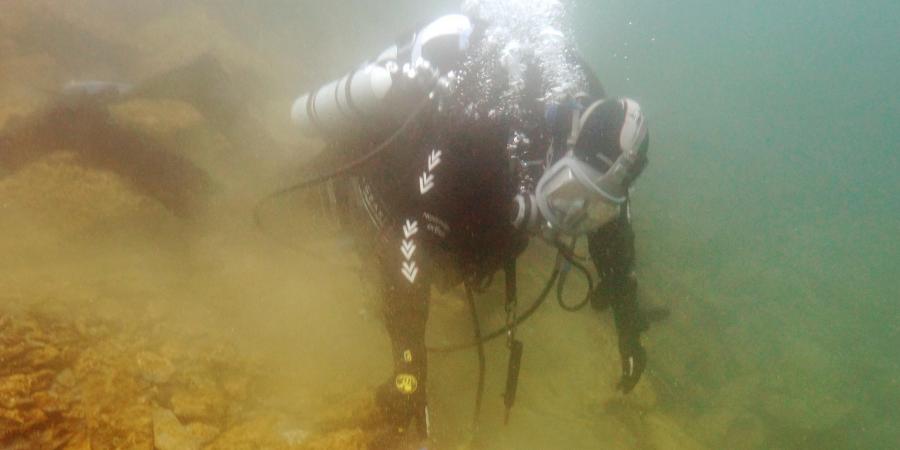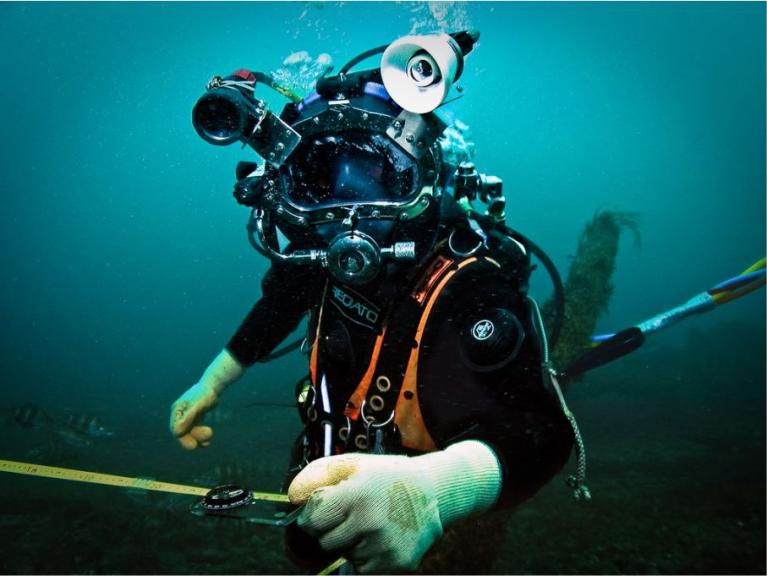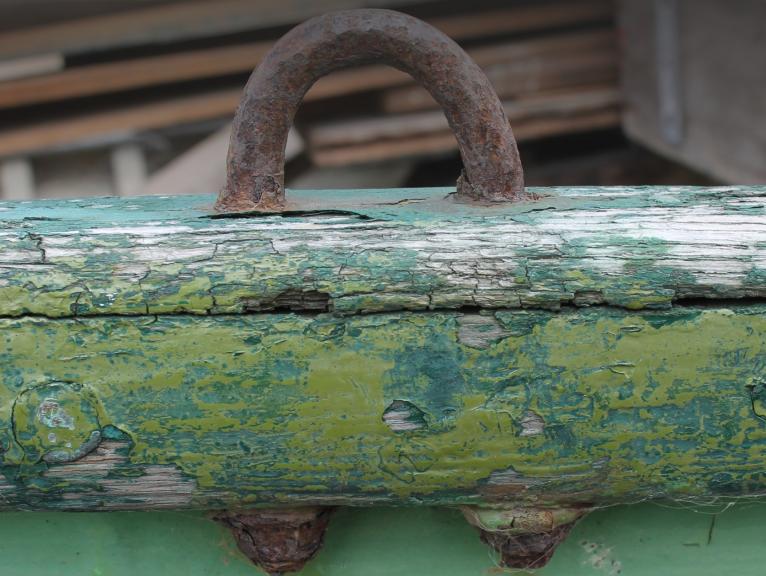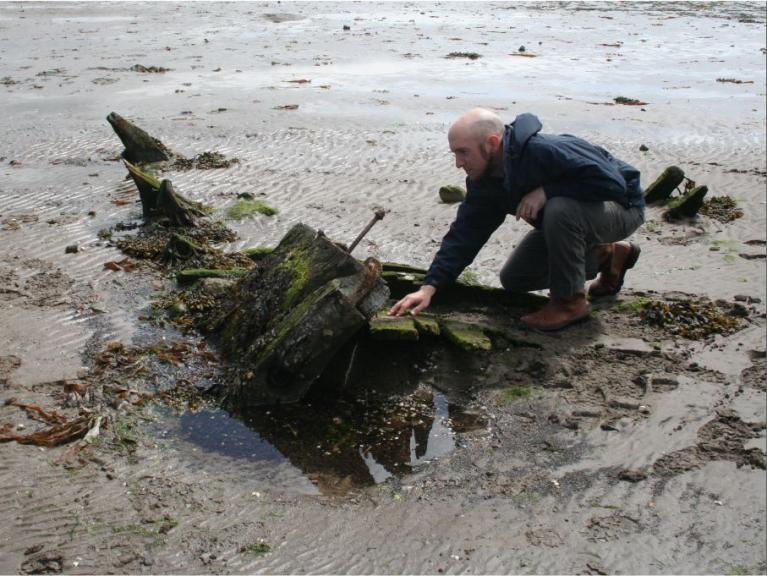As part of the Scottish Underwater Archaeological Services contract, awarded by Historic Environment Scotland, Wessex Archaeology undertook diving work on several sites between 2015 and 2017. The contract aimed at carrying out archaeological assessments on significant underwater heritage assets within Scottish territorial waters. The following are a few examples.
The Galmisdale Bay Wreck (Canmore ID 213713)
Wessex Archaeology Scotland was commissioned by Historic Environment Scotland to complete a range of tasks relating to the Galmisdale Bay wreck. The underlying reasons for this project were the reports of large ship timbers washing up on Galmisdale Bay beach, which were suspected to come from the wreck. The aim of the project was to:
- Collect, survey, and record all timbers thought to derive from the Galmisdale Bay wreck;
- Provide a dendrochronological analysis of the timbers with the help of Dr Anne Crone of AOC Archaeology;
- Conduct a visual inspection of the current state of the wreck supported through photographic record;
- Reinforce existing conservation methods through the deployment of additional sandbags.
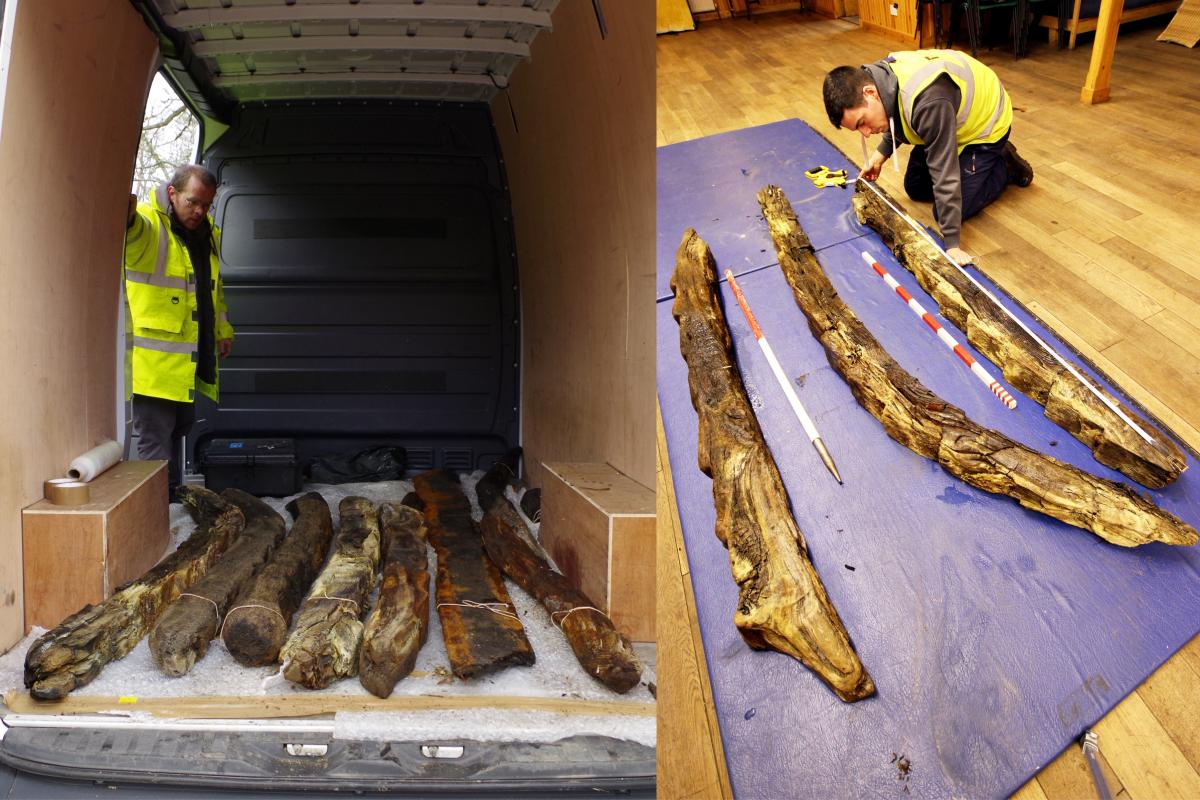
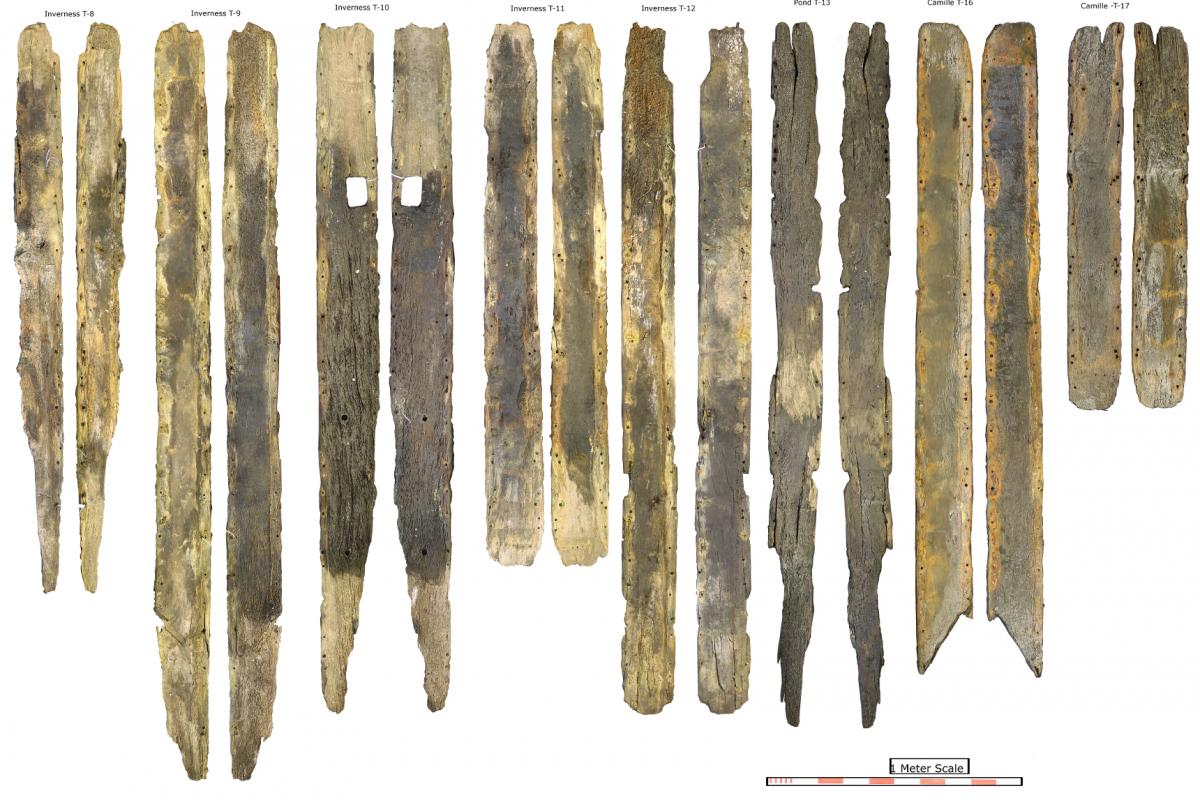
To achieve the goals Wessex Archaeology used snorkelling as a method of prospection, as the site lay at very shallow depth, making the use of underwater breathing equipment (scuba equipment) impractical. This also helped to deploy further sandbags for protection on the wreck site.
Timbers that were not in situ were collected, grouped together and recorded using traditional methods along with photogrammetry. A dendrochronological assessment was undertaken by Wessex Archaeology’s partners. In addition, a review of existing data and previous site investigations was undertaken and an assessment on the current state of the wreck was included in the final report.
The dendrochronological investigation concluded that at least some of the timbers from the Galmisdale Bay wreck site consisted of white oak, dated to the end of the 18th century and originating from Boston in North America. The identity of the vessel remains uncertain, with the possibility of it being Alexander MacDonald of Glenaladale's pleasure boat Dubh Ghleannach which sank in 1817 or the Mary, a Smack that ran aground in 1864.
The Kennemerland (Canmore ID 1401)
This is a site of great archaeological importance, partially due to the fact that Keith Muckelroy based large parts of the archaeological theory he developed on this site, but also because the site is of archaeological significance. The Kennemerland (17th century) was an armed merchant vessel of the Dutch East India Company (Vereenigde Oost-Indische Compagnie or VOC), bound for Batavia in the East Indies from Texel in the Netherlands. The wreck was initially designated under Section 1 of the Protection of Wrecks Act 1973. However, in 2013 this was superseded by designation of the Out Skerries Historic Marine Protected Area 5.
As some of the ingots were at risk of being illegally salvaged, Historic Environment Scotland commissioned Wessex Archaeology to recover all ingots at risk. Wessex Archaeology successfully recovered a total of five lead ingots from the site, located off the Out Skerries, Scotland. The ingots were recorded by means of measurement, outline drawing, photography and photogrammetry, and later recovered.
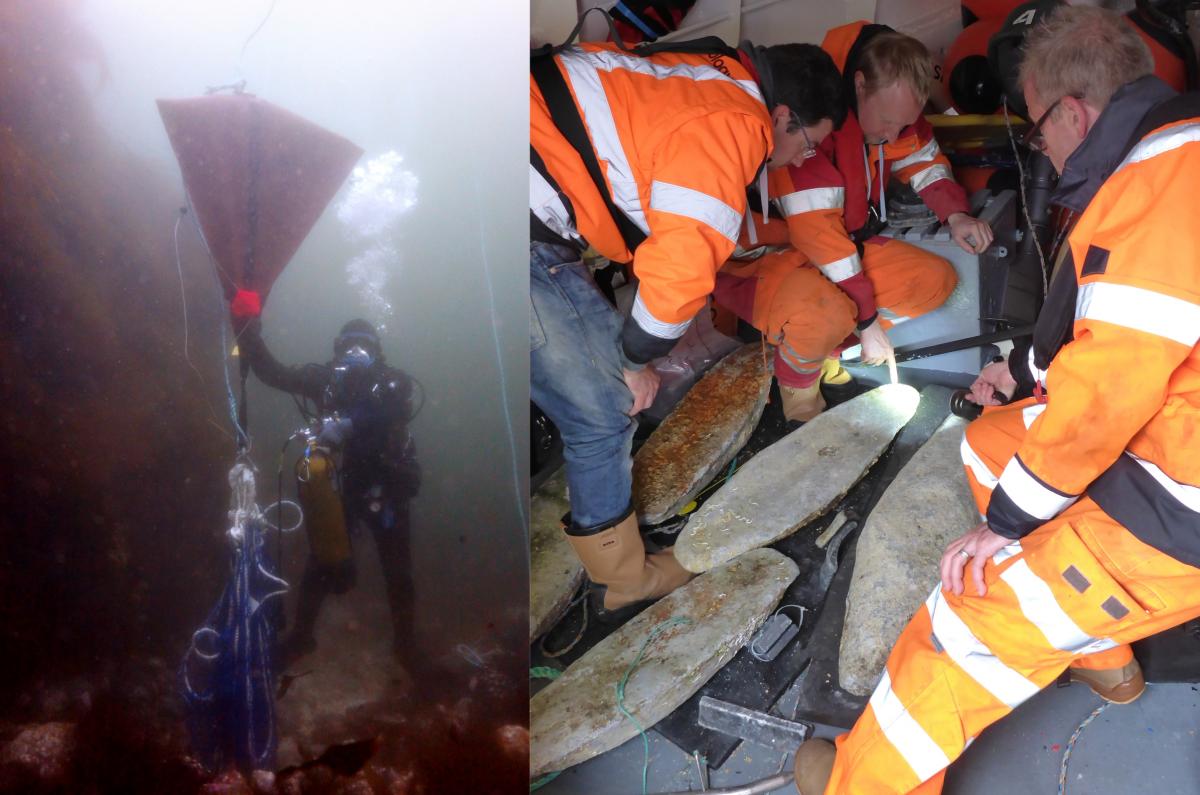
The weight of the lead ingots, each weighing about 150 kg made the recovery particularly difficult, but through a meticulously planned methodology and adaptability to encountered problems Wessex Archaeology lifted the ingots with a minimum number of dives. A lifting net with a neutrally buoyant lifting bag was used to slowly lift the ingots up to the surface.
Out of the recovered five ingots, two had discernible markings on them. Two markings were previously found on other ingots recovered by Keith Muckelroy and Richard Price from the Kennemerland in 1980. The other marking was not present on the Kennemerland ingots but on another VOC ship wrecked in Australia, called the Zuiddorp. The recovered finds have been delivered to the Shetland Museum and Archive to be held as part of their extensive collection pertaining to the wreck site.
Belnahua Quarries (Canmore ID 22639)
Wessex Archaeology successfully assessed, surveyed and recorded the submerged evidence for slate quarrying and related activities at Belnahua in the Firth of Lorn, Argyll and Bute. As the site was to become a Scheduled Monument it was important to get an overview of what archaeological material remained inside the submerged quarry.
The two slate quarries were abandoned during the First World War. They flooded after pumping ceased and have since been left untouched.
Although some underwater photography of quarry features had been undertaken, prior to 2015 no archaeological survey had been carried out. Therefore, Wessex Archaeology carried out an assessment of local archives and conducted snorkel and diving photographic surveys.
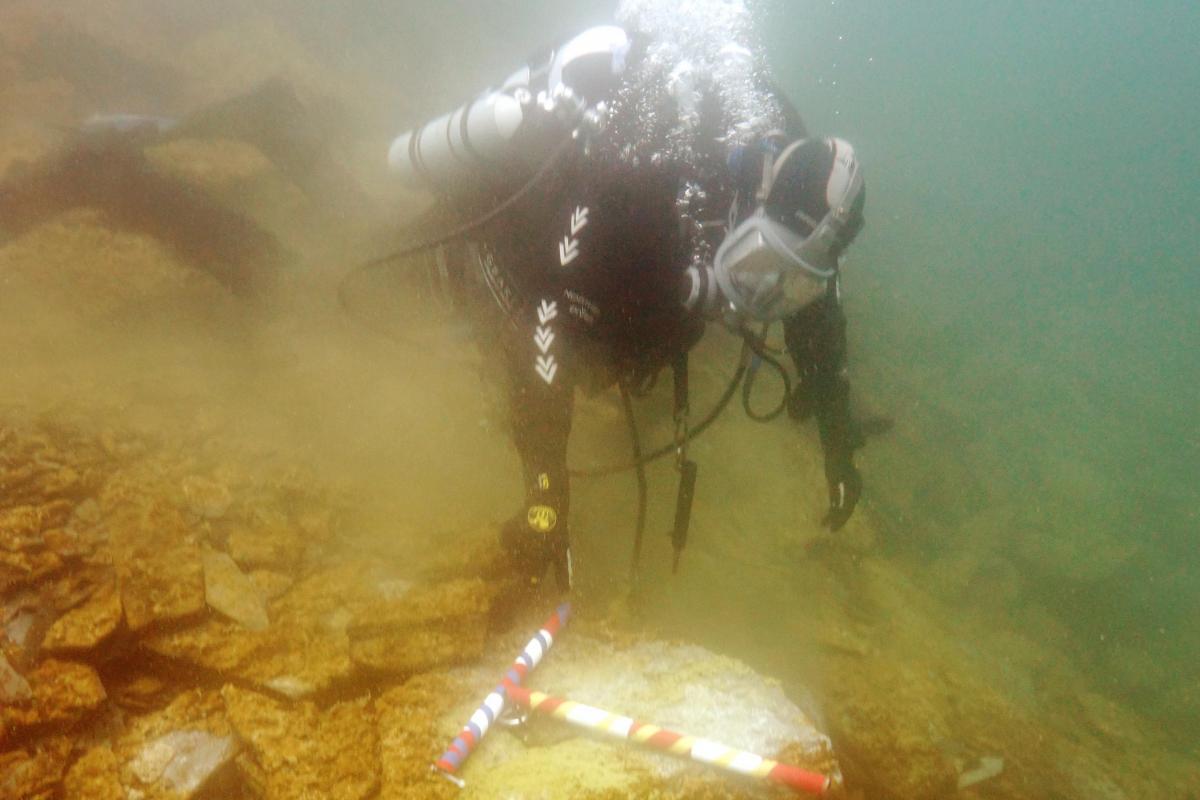
The archive assessment identified relevant material at local museums and heritage centres, including terrestrial surveys and mapping, an equipment inventory of the Toberonochy quarry (a similar site to Belnahua), and an overview of the slate quarrying history in Scotland.
The snorkel and diving survey located, mapped and recorded a total of 31 archaeological features. Most have been identified and include slate bogeys, wall structures, pipes, rails, fire beaters, machinery and pottery. Three areas related to different work processes were identified within the quarries: slate extraction, slate processing and slate waste areas.
Drottningen af Sverige (Queen of Sweden)
(Canmore ID 206700)
The Queen of Sweden belonged to the Swedish East India Company (Svenska Ostindiska Companiet or SOIC), built in Stockholm in 1741 as a cargo vessel for expeditions to China. Wessex Archaeology was commissioned to carry out a site evaluation prior to a decision to potentially designate the site as an historic Marine Protect Area (MPA). The work consisted of collecting plans and geophysical data of the wreck, undertake a diving assessment to delineate the extent of the site and the archaeological potential, and enhance the photographic record of visible features.
Relevant material was collected, including plans of the site produced in 1990 as part of a pre-disturbance survey. Local museums (Shetland Museum and Archives) and divers were also contacted. Research was carried out on the history of the vessel; its wreckage and salvage, followed up with previous archaeological work carried out on site.
The diving assessment relocated a number of previously reported cannon and identified some wooden ceiling planking. A reassessment of the previously lifted ingots was also carried out.
